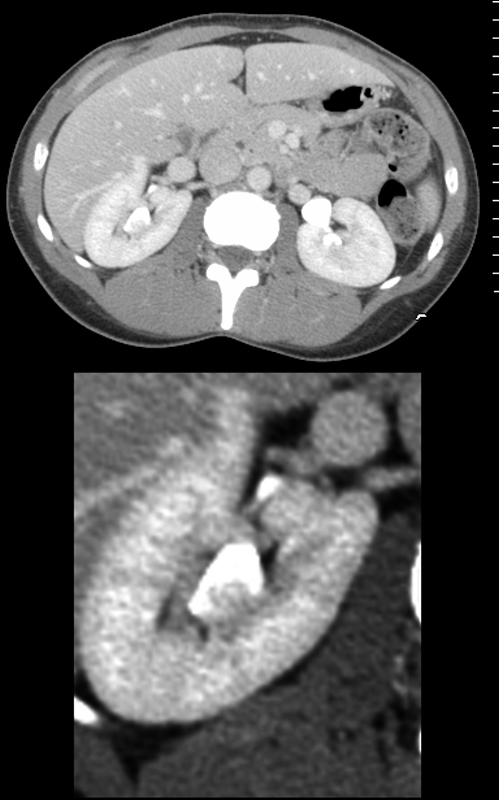
40-year-old female with SLE and NSAID use presents with hematuria. CT with contrast in the axial plane during the excretory shows evidence of a filling defect in a contrast filled right renal calyx, resulting in a ?lobster claw? appearance of the calyx characteristic of papillary necrosis
Ashley Davidoff MD TheCommonVein.net 113597c
CT urogram in the coronal plane using bone windows shows evidence of papillary necrosis in 2 right upper pole calyces characterized by ?golf ball on a tee? sign. This sign is also called the ?lobster claw? sign
Ashley Davidoff MD TheCommonVein.net 135424c
- Renal papillary necrosis (RPN) is
- necrosis of the renal papillae, caused by the following
-
- Ischemia:
- severe dehydration,
- shock
- vasculitis
- sickle cell disease:
-
- due to the vaso-occlusive events
-
- diabetes
- as a result of microvascular and macrovascular changes
- Infections:
-
- Chronic or severe urinary tract infections
-
- Obstruction
- Analgesic Nephropathy:
- Chronic use of certain analgesic medications, especially nonsteroidal anti-inflammatory drugs (NSAIDs) and aspirin, has been associated with renal papillary necrosis. These drugs can compromise renal blood flow and contribute to tissue damage.
- Ischemia:
-
